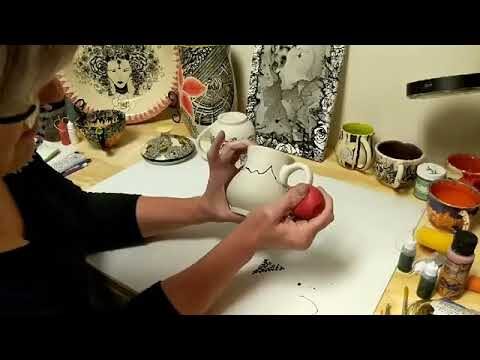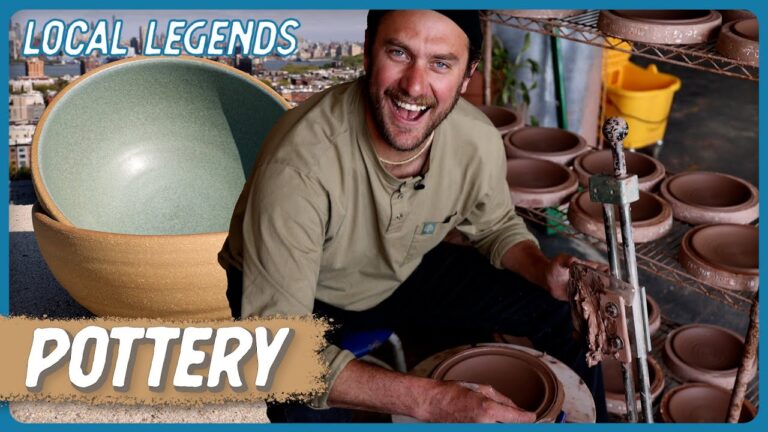Are you ready to elevate your ceramic creations? Hand-building ceramic textures is an art form that adds depth and character to your pieces. Whether you’re a seasoned ceramic artist or just starting out, mastering the art of creating unique textures by hand will take your work to the next level. In this article, we’ll explore the techniques and tools you need to create eye-catching and dynamic textures that will set your ceramic pieces apart. Get ready to unleash your creativity and transform your work with the power of hand-built ceramic textures.
What are the three types of hand building in ceramics?
If you’re new to ceramics, you may be wondering about the different techniques for building pieces by hand. The three main methods are pinching, coiling, and slab building. Each technique offers its own unique advantages and can be used to create a wide variety of forms and shapes.
Pinching involves using your fingers to gently shape and mold the clay. Coiling, on the other hand, involves rolling out long, snake-like pieces of clay and then stacking them on top of each other to build up the walls of a vessel. Finally, slab building involves rolling out flat sheets of clay and then cutting and piecing them together to create a form. With practice and patience, these three methods can be used to create everything from functional pottery to sculptural pieces.
With a solid understanding of pinching, coiling, and slab building, you can truly unleash your creativity and bring your ceramic visions to life. These methods provide a strong foundation for creating a wide range of pieces, and with practice, you’ll be able to master the art of handbuilding in ceramics. Whether you’re interested in creating functional pottery or expressive sculptures, these three techniques are essential tools for any ceramic artist.
Which ceramic clay is best for handbuilding?
When it comes to handbuilding with ceramic clay, earthen-colored stoneware clay is often considered the best choice. This type of clay produces durable ware and is highly responsive to various firing techniques, such as reduction firing. Its good plasticity makes it ideal for both wheel throwing and handbuilding methods, allowing for easy manipulation and shaping.
One of the key advantages of using earthen-colored stoneware clay for handbuilding is its ability to withstand the effects of air, gas, and smoke during firing. This results in a finished product that is not only visually appealing but also resilient and long-lasting. Whether you are creating functional pottery or intricate sculptures, this type of clay provides the stability and versatility needed to bring your artistic vision to life.
In conclusion, if you are looking for a ceramic clay that excels in handbuilding, earthen-colored stoneware clay is the way to go. Its durability, plasticity, and compatibility with various firing techniques make it a top choice for artists and ceramicists alike. With this clay, you can unleash your creativity and create stunning pieces that stand the test of time.
What is the surface used for hand building clay?
When hand building clay, having the right surface is crucial for a successful outcome. Potters typically use surfaces like plaster, plaster covered in canvas, or plywood covered in canvas to wedge clay on. These materials provide a smooth and stable foundation for shaping and molding the clay into various forms.
In addition to the more common surfaces, potters also have the option to use materials such as concrete, granite, Masonite, concrete board, and Hardibacker board for hand building clay. Each surface offers unique characteristics that can affect the texture and finish of the clay. Whether you prefer a smooth finish or a more textured look, choosing the right surface is essential for achieving your desired results in pottery.
Experimenting with different surfaces can lead to new and exciting possibilities in hand building clay. By exploring the various options available, potters can discover which surface works best for their individual style and techniques. Ultimately, having a reliable and suitable surface is key to creating beautiful and functional clay pieces that showcase the artist’s skill and creativity.
Master the Art of Hand-Building with Ceramic Textures
Are you ready to elevate your ceramic hand-building skills to the next level? With a focus on mastering the art of ceramic textures, you can take your creations to new heights. Whether you’re a beginner or have been working with clay for years, learning how to manipulate textures in your hand-built ceramics can bring a new dimension to your work.
By experimenting with different techniques such as carving, imprinting, and adding surface decorations, you can create truly unique and eye-catching pieces. From rustic and earthy to sleek and modern, the possibilities for incorporating textures into your hand-built ceramics are endless. With the right guidance and practice, you can develop a mastery of texture that will set your work apart and leave a lasting impression on anyone who sees it.
So, if you’re ready to take your ceramic hand-building to the next level, start mastering the art of textures today. With dedication and a willingness to explore new techniques, you can bring depth and character to your creations that will captivate and inspire. Whether you’re creating functional pieces or sculptural works of art, the ability to skillfully incorporate textures will add a whole new level of sophistication to your ceramics.
Elevate Your Craft: Techniques for Unique Ceramic Textures
Elevate Your Craft with these innovative techniques for creating unique ceramic textures. Discover how to manipulate clay to achieve a variety of patterns and finishes that will set your work apart from the rest. From carving and stamping to experimenting with different glazes, this guide will inspire you to push the boundaries of traditional ceramic artistry.
Explore the endless possibilities of texture in ceramics and elevate your creations to new heights. With step-by-step instructions and helpful tips, you’ll learn how to add depth and dimension to your pieces through various texture techniques. Whether you’re a seasoned ceramic artist or just starting out, this resource will empower you to unleash your creativity and craft one-of-a-kind pieces that showcase your unique style.
Incorporating hand-building ceramic textures into your work can add depth and character to your pieces. By experimenting with different techniques and tools, you can create unique and visually appealing surfaces that capture the attention of viewers. Whether you’re a beginner or an experienced ceramic artist, exploring the world of hand-building textures can open up a whole new realm of creativity and possibilities for your artwork. So go ahead, get your hands dirty and start creating beautiful textured ceramics today!



